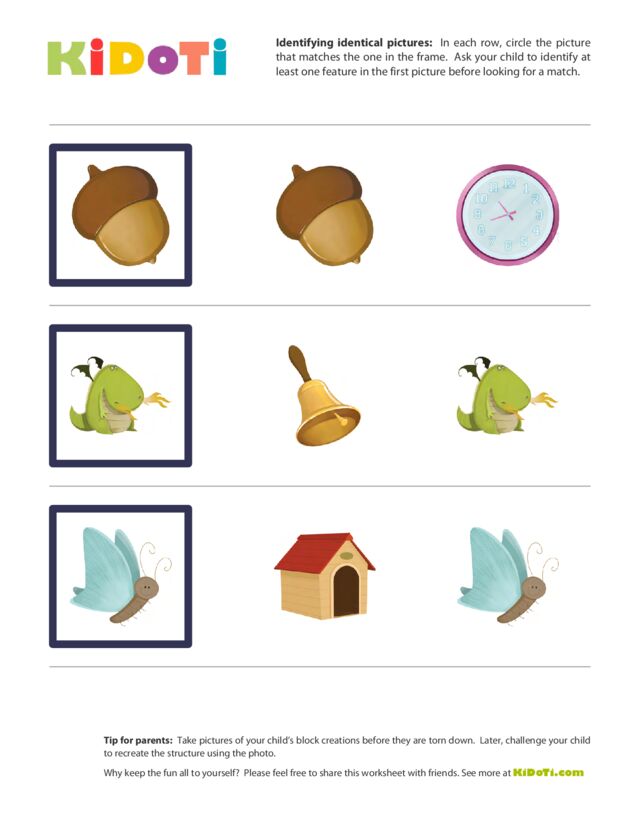Many letters (such as B and P or J and L) appear very similar and only differ in a small way. The following worksheets challenge children to identify images from a collection of very similar (but slightly different) images.
Tips for using the “Identical Pictures” worksheets
To help your child focus on one line at a time, either fold the page or cover part of the page with a plain sheet of paper. This will help his eyes track across the page from left to right.
Before using a pencil, direct your child to use his finger to point to the the matching picture in each row. As he points to the matching picture, ask him to tell you some of the characteristics of the picture in the box. For example, he might say that the butterfly has blue wings and a brown body or the king has a crown and a beard. After your child correctly identifies the matching picture and highlights some details in it, let him mark his answer with his pencil.
Extra activities to supplement the “Identifying Identical Pictures” worksheets
Take pictures of your child’s block creations before they are torn down. Later, challenge your child to recreate the structure using the picture to guide him. To create an identical block structure, he will need to observe each distinguishing characteristic in his first creation and copy it exactly. He will also need to compare and contrast his new creation with the original creation in the picture to ensure he replicates it correctly. Stand next to another adult and ask your child to identify 3 similarities and 3 differences between you. Who is taller? Who has longer hair? Do you have the same color hair or eyes? Or, as you walk outside, challenge your child to find two leaves that are the same size or color. Then ask him to find two trees that are the same height. Your child will need to compare and contrast the trees that he sees to find two that are the same height or color or to notice the subtle differences between hair colors.








